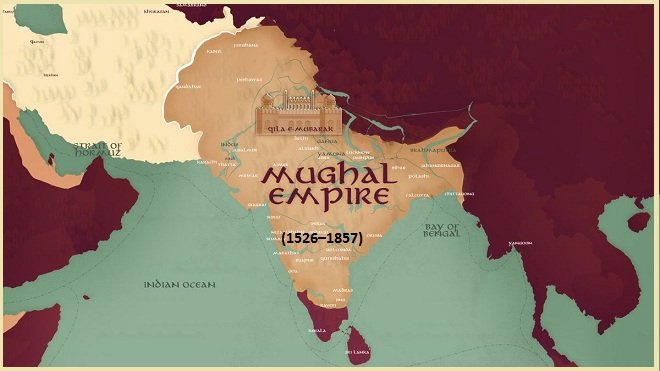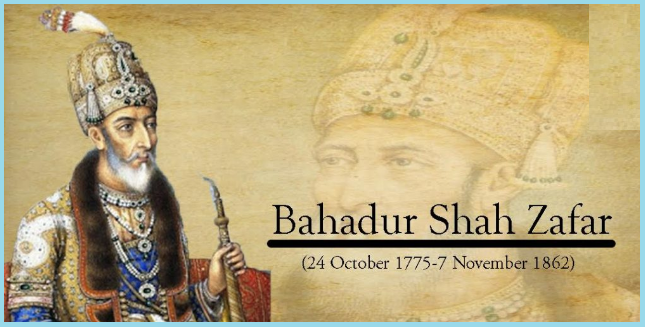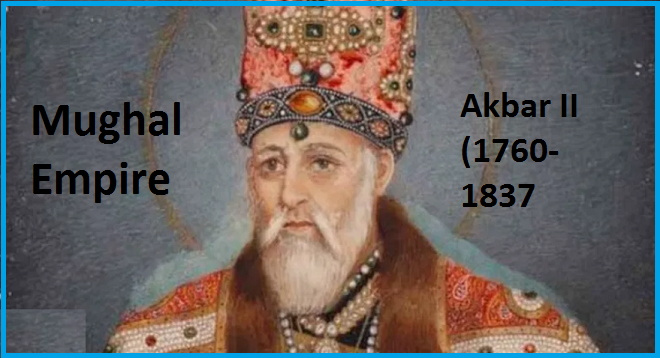Shah Alam II
Full Name and Background
Shah Alam II, originally named Ali Gauhar, was born on June 25, 1728. As the son of Emperor Alamgir II, Shah Alam II is remembered as the penultimate ruler of the Mughal Empire.m II a key figure in Mughal history.
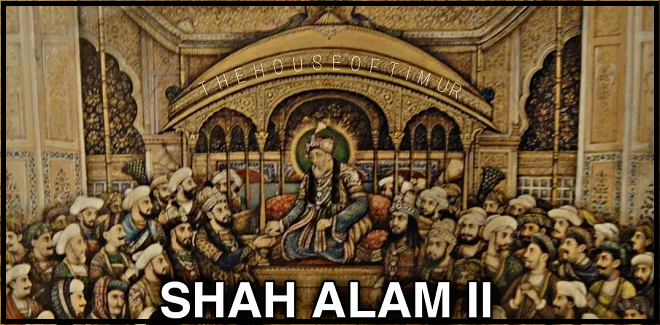
Early Life
Born into a royal family during turbulent times, Shah Alam II’s early life was fraught with challenges. Despite his noble lineage, Shah Alam II witnessed the Mughal Empire’s decline. He was a cultured and learned individual, deeply influenced by Persian literature and Sufi traditions. These traits earned Shah Alam II respect among intellectuals and poets of his era.
Escape from Delhi
After his father, Alamgir II, was assassinated in 1759, Shah Alam II fled Delhi to escape court conspiracies and threats to his life. In an attempt to mobilize support for regaining his throne, Shah Alam II’s voyage took him to Bengal. This escape was a watershed in his life as he started to learn how to deal with the intricacies of both politics and war.
Bengal War
While in Bengal, Shah Alam II formed alliances with Nawab Mir Qasim and Shuja-ud-Daula, the Nawab of Awadh. Together, they resisted the growing influence of the British East India Company. This marked the beginning of Shah Alam II’s active involvement in military campaigns, showcasing his determination to uphold the Mughal legacy.
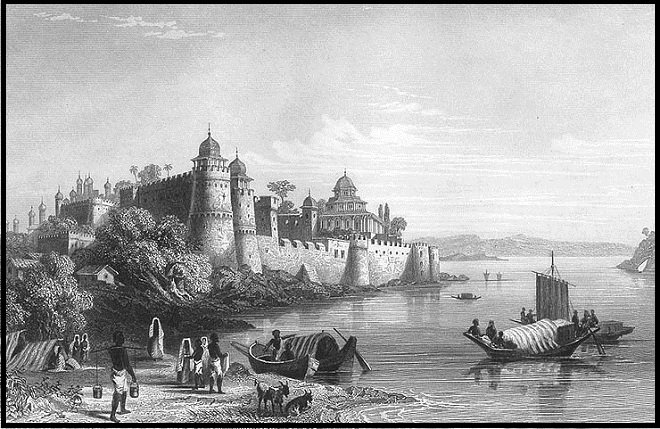
Emperor from Allahabad
In 1765, Shah Alam II was installed as the titular emperor of the Mughal Empire under the Treaty of Allahabad. However, Shah Alam II’s power was limited, as the British East India Company controlled most of his territory. He was reduced to a symbolic ruler, with his authority confined to the Allahabad region.
Battle of Buxar
The Battle of Buxar in 1764 was a pivotal event in Shah Alam II’s life. His forces, along with those of Mir Qasim and Shuja-ud-Daula, were defeated by the British East India Company. This loss marked the end of significant Mughal resistance to British expansion and further diminished Shah Alam II’s influence.
Treaty of Allahabad
The Treaty of Allahabad formalized Shah Alam II’s dependence on the British East India Company. In exchange for an annual pension, Shah Alam II granted the Company Diwani rights over Bengal, Bihar, and Orissa. This treaty symbolized the Mughal Empire’s subjugation to colonial powers.
Absence from Delhi
Following the treaty, Shah Alam II resided in Allahabad under British protection. His absence from Delhi highlighted the fragmentation of the Mughal Empire and underscored Shah Alam II’s declining relevance in Indian politics.
Bengal Famine
The Bengal Famine of 1770 further exposed the vulnerabilities of Shah Alam II. Although Shah Alam II had limited power to address the crisis, the famine underscored the incompetence of British administration and the devastating impact of their policies.
Return to Delhi
In 1772, Shah Alam II returned to Delhi with the support of Mahadji Shinde, a Maratha leader. This event marked a brief revival of Shah Alam II’s authority. Though his return symbolized hope for the Mughal dynasty, Shah Alam II’s reign remained overshadowed by Maratha influence.
Reformation of the Mughal Army
During his second reign, Shah Alam II attempted to modernize the Mughal army by incorporating European military techniques. Despite Shah Alam II’s efforts, these reforms were largely unsuccessful due to resource constraints and resistance from within.
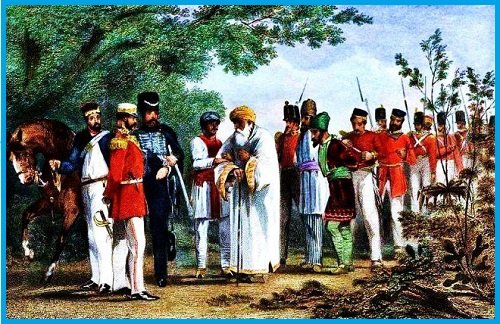
Foreign Relations
Shah Alam II navigated complex foreign relations during his reign. While Shah Alam II sought alliances with regional powers such as the Marathas, Jats, and Sikhs, his dependency on the British East India Company limited his autonomy. This delicate balancing act defined Shah Alam II’s diplomatic strategies.
Political Turmoil
Shah Alam II’s reign was marked by constant political turmoil. Factions within the Mughal court and external threats from regional powers created an unstable environment.
Shah Alam II’s tenacity in overcoming these obstacles demonstrated his resolve to uphold the Mughal heritage.
Jats
A powerful agrarian group, the Jats presented serious obstacles to Shah Alam II’s authority. Their recurrent rebellions significantly weakened Shah Alam II’s authority over his realms by upsetting the Mughal government in northern India.
Sikhs
The rise of Sikh power in Punjab during Shah Alam II’s reign marked a shift in the political landscape. A new political system emerged as a result of the Sikh confederacy’s growth, which diminished Mughal power in the area.
Downfall
Shah Alam II’s downfall was a slow but inevitable process. His reliance on external powers like the British and Marathas left Shah Alam II vulnerable to manipulation. The emperor’s inability to assert his authority further accelerated the decline of the Mughal Empire.
Prisoner of Ghulam Qadir
One of the most humiliating episodes of Shah Alam II’s life was his imprisonment by Ghulam Qadir, a Rohilla chief. In 1788, Ghulam Qadir sacked Delhi and blinded Shah Alam II, an act that symbolized the degradation of the Mughal throne.
Client of Mahadji Shinde
After his release, Shah Alam II became a client of Mahadji Shinde, who reinstated him as the emperor in Delhi. Despite holding the title, real power rested with the Marathas, who controlled the Mughal territories.
Second Reign
Shah Alam II’s second reign was a period of relative stability under Maratha protection. Despite his limited power, Shah Alam II continued to serve as a symbol of the Mughal Empire’s cultural and historical heritage.
Death
Shah Alam II passed away on November 19, 1806. His life served as a metaphor for the Mughal Empire’s hardships throughout its downfall. Shah Alam II’s biography exemplifies the Mughal dynasty’s enduring character via his perseverance and fortitude in the face of adversity.
In Popular Culture
Shah Alam II’s life has inspired various literary and artistic works. Shah Alam II’s story continues to resonate as a symbol of perseverance during one of India’s most turbulent eras.
Shah Alam II, the Mughal emperor, was born on June 25, 1728, and passed away on November 19, 1806. During the Mughal Empire’s last years, Shah was renowned for his difficult rule.
Regarding his private life, historical accounts indicate that Shah Alam II had several wives, which was a typical Mughal emperor strategy to fortify alliances and uphold courtly customs. However, detailed accounts about the exact number of his wives are scarce. His reign is remembered for his resilience and his struggle to uphold the Mughal legacy amidst political turmoil and the rising dominance of the British East India Company.
Shah Alam II, the Mughal Emperor, had several daughters, though historical records do not provide a definitive count or detailed accounts of each of them. Born on June 25, 1728, Shah Alam II lived a tumultuous life marked by political intrigue, warfare, and the decline of the Mughal Empire. He passed away on November 19, 1806.
Shah Alam II, the Mughal Emperor, had multiple sons. However, historical records primarily mention Prince Mirza Akbar, who later became Akbar Shah II, succeeding his father as the penultimate Mughal Emperor. While there mig ht have been other sons, detailed records about them are scarce.
Here is what is known about his prominent son:
Akbar Shah II (Mirza Akbar):
Born: April 22, 1760
Died: September 28, 1837
Akbar Shah II succeeded Shah Alam II in 1806 and ruled until his death in 1837. His reign was largely symbolic, as the British East India Company controlled the real power.
Shah Alam II himself was born on June 25, 1728, and passed away on November 19, 1806.







